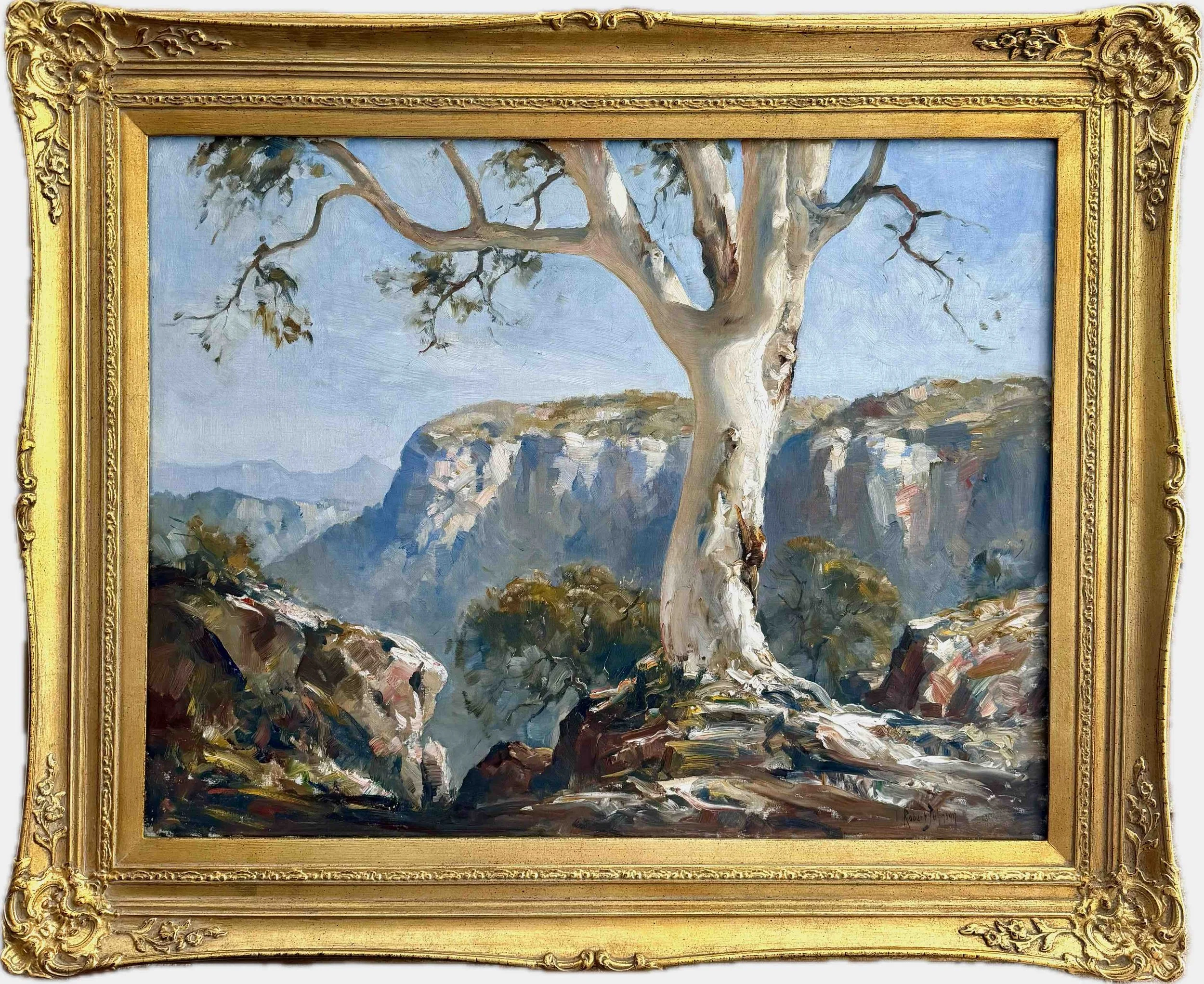Adrian Feint | Hibiscus 1946 | SOLD
Adrian Feint
Hibiscus study 1946
Oil on panel
24 x 19 cm
Signed lower right
$2,400
BIO | Adrian George Feint (1894-1971)
Adrian George Feint (1894-1971), artist, was born on 28 June 1894 at Narrandera, New South Wales, eldest of three children of native-born parents Samuel Feint, stationer, and his wife Catherine Charlotte, née Flood, grand-daughter of Edward Flood. From childhood Adrian was interested in drawing and decorated his Narrandera school exercise-books at night. In 1912 he entered the Sydney Art School where he studied under Julian Ashton and Elioth Gruner. Feint enlisted in the Australian Imperial Force on 21 January 1916, served with the 15th Field Ambulance on the Western Front from February 1917 and was praised in September 1918 for the gallantry he displayed near Péronne, France. He was granted three months leave in 1919 to study at the Académie Julien, Paris.
Discharged on 12 October 1919, Feint returned to the Sydney Art School which was noted for its teaching in 'black and white'. He worked extensively for Sydney Ure Smith's advertising agency, Smith & Julius, and provided decorations and cover designs for his magazines, Art in Australia (1928-40) and the Home. Regarded as having impeccable taste, Feint (with Walter Taylor) directed Grosvenor Galleries between 1924 and 1928. In the late 1920s he depicted himself as a connoisseur surrounded by objets d'art in his etched self-portrait, 'The Collector'.
Feint's first etchings—figure studies such as 'Scarf Dance', views of Sydney and his earliest bookplates—had been produced in 1922 and exhibited with the Society of Artists, Sydney, and the Australian Painter-Etchers Society. He showed his first wood-engravings in 1927 while studying design with Thea Proctor. His bookplates, including those produced for Olive King, Dorothea Mackellar, John Mullins, Frank Clune and the Duke and Duchess of York, attracted local and worldwide attention, culminating in an exhibition at the Library of Congress, Washington, D.C., in 1930. His decorative penwork and designs for private press books, such as those published by the Australian Limited Editions Society, were also highly praised. He painted tropical fish and parrots on the glass panels for the Australian pavilion at the New York World's Fair (1939).
Despite such recognition, Feint still sought acceptance as an oil-painter. He had begun to exhibit paintings in 1929 with the Society of Artists, of which he became a member (1931). With the support of (Sir) James McGregor, a close friend and patron, he virtually gave up commercial art in 1938 to concentrate on oil-painting—receiving technical advice from Margaret Preston. The best of his still life and landscape paintings have affinities with surrealism, but it is of the decorative English variety (as practised by Edward Wadsworth) rather than the French. Feint's paintings received critical acclaim in the 1940s and 1950s; Ure Smith published Adrian Feint Flower Paintings in 1948. Douglas Dundas described his flowerpieces as 'flower arrangements meticulously designed, superbly painted, and set in a related environment of time and space'. Some of Feint's works, such as 'The Jetties, Palm Beach' (1942) and 'Happy Landing' (1944) are potent images, but his reputation continues to be based on his graphic art.
A 'remarkably handsome man, always immaculately but discreetly dressed', Feint lived austerely, though 'early economies had enabled him to acquire beautiful examples of furniture, painting and other objects' for his Elizabeth Bay flat. He died on 25 April 1971 in St Vincent's Hospital and was cremated with Anglican rites. His portrait by Nora Heysen is held by a private collector in Sydney.
By Roger Butler
Australian Dictionary of Biography





